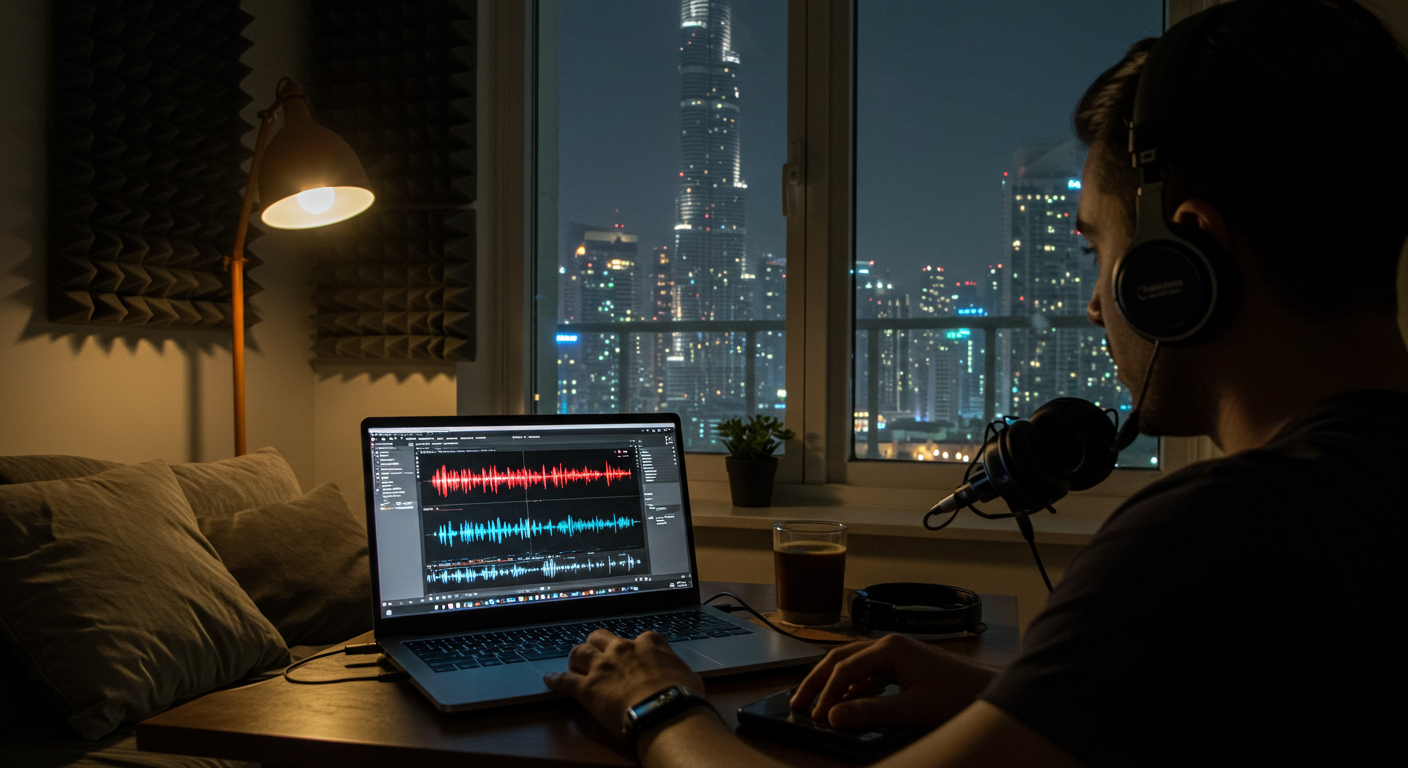

Clean, professional editing separates good podcasts from great ones. These editing tips will help you sound sharp, save time, and keep listeners engaged.

Editing is the part of podcasting that most beginners underestimate, yet it is one of the biggest influences on how professional your show sounds. Even with great content and top-quality gear, poor editing can damage the listener experience. You do not need to be an audio engineer to make your episodes sound polished, but you do need a process. Whether you edit in your bedroom or after a studio session booking in Dubai UAE, these editing hacks will elevate your podcast and speed up your workflow.
Here are five editing techniques every podcaster should start using.
Use noise reduction to clean your base audio
Before you start cutting and rearranging segments, eliminate the background noise. Use noise reduction tools built into software like Adobe Audition, Audacity, or Descript to clean your recordings. Even quiet hums from air conditioning or computer fans can be distracting in headphones. If you record at home, try to create a consistent environment and use blankets or foam panels to absorb echo. If you record in a rented studio through Pod Connect, you’ll already benefit from acoustic treatment, but a final pass with noise reduction still improves clarity.
Cut filler words and long pauses to tighten pacing
Pacing is key to retaining attention. When a podcast drags or contains too many filler words like “um,” “you know,” or “like,” it sounds less polished. Most audio editors allow you to visualize silence or repetitive sound patterns, making it easy to trim them down. Some tools, like Descript, automatically detect and highlight filler words, allowing you to remove them in one click. Cutting just ten seconds from every minute can dramatically improve the flow of your episode.
Normalize audio levels for consistency
Nothing frustrates a listener more than fluctuating volume. If your intro is quiet, your guest is loud, and your outro sounds like a whisper, you’ll lose credibility. Use audio normalization to keep volume consistent across the entire episode. Apply light compression to balance vocal peaks and lows. This is especially important if you have multiple speakers or record across different sessions. For podcasters who use local studio session booking in Dubai UAE, the in-house team often handles this step, but it’s still smart to know how to do it yourself.
Add music and sound design for energy
Well-placed music adds mood, branding, and emotional pacing to your show. Choose royalty-free music that aligns with your tone. Use an energetic intro track, a soft background layer during transitions, or sound effects to break up segments. Just be sure not to overpower your voice. Maintain low volume and fade transitions properly. Resources like Epidemic Sound, Artlist, or even YouTube Audio Library provide thousands of tracks for podcasters.
Create a reusable editing template
If you find yourself repeating the same steps for every episode, build a template. Set up your track structure with labeled audio lanes for host, guest, music, and effects. Preload your intro and outro. Add favorite EQ and compression presets. Templates help you reduce editing time by as much as 40 percent and allow you to focus more on the creative side of your content. This is especially useful for podcasters managing their own post-production without a team.
The editing process can seem overwhelming at first, but with the right hacks in place, it becomes a creative and enjoyable part of podcasting. Good editing helps you deliver a focused message, maintain a professional brand, and build trust with every episode.
Stay informed with industry insights and exclusive community events at Alpha Production.